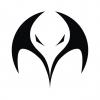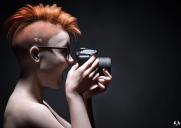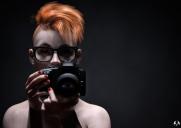Virtual photo studio VS real studio photo ? Is that possible ?
 MaloneXI
Posts: 145
MaloneXI
Posts: 145
Hi all,
As I do not often have true models to shoot with, I started using our favorite software trying to make my own photo studio, a virtual one. As many of you , I think.
I took my attention on different parameters to deal with, but there are somes I don't understand. For example, I created some cameras to be the most accurate of my canon lenses. For a "first-true-lens" , I decided to deal with the 50mm f1:4.
The first point I don't understand is the Fstop option on tone mapping tab. By default on 8. And the second one , the "FOV lenght". Must I enter the f1.4 on the tone mapping tab ? And what is the FOV lenght ? How to be the most accurate to obtain what I can obtain in real life ? I didn' understand the role of that function....
Can somebody help ? Is there anyone who tried to create the most accurate "true" virtual studio as possible ? Thanx a lot :D








Comments
It's my understanding that the camera in Daz Studio does not behave like a real camera with respect to the f-stop, at least. That may have changed over the years, however.
FOV lenth is Field Of View distance, or how far the camera can see what it can see. In reality, atmospheric conditions and general vision quality determine what we can see, either with our eyes or a camera. In 3D, you can see forever, theoretically (the actual limit being set by the software and hardware capability and mesh resolution and scale). Basically this is your vanishing point setting.
Adjusting the FOV length determines what is visible in the scene, so if you had a scale model of New York City, you could set the camera at 42nd Street and see all the way to Cleveland, Ohio or Miami, Florida. By adjusting the FOV length, you could reduce that to 34th Street, or even 41st.
As for the f-stop, I don't have the gear to test the exact differences between a real camera and the ones in Daz Studio, so I can't say if it's a 1:1 conversion. It would be nice if it were, since you could recreate actual photos (at least the camera settings).
Additionally, each camera you place in a scene can have its own settings in addition to the render settings. Since you can turn off the Tone Mapping, I think this may allow the individual camera's settings to take over. But, as I said, I don't have the camera gear to make such tests.
Ok , thanks a lot for the answer ! I'm trying to get the best resulat as possible , really near of reality , but I was asking myself if it was useless or not huhu. Anyway it offers many others possibilities of course. I never used daz as I do now I'm taking "true" photos. Really intersting to play with parameter as if we had a true photo studio :)
@malonexi_7e3861a360
The short answer is not exactly. Lighting is the area that comes the closest to a real photo studio. Between DS native properties and several PA products, you can emulate photo studio lighting very accurately.
Emulating a specific camera and lens may not be as accurate, although DS 4.10.0.123 has a number of lens parameters that havn't been there before (IIRC). I may be wrong since I have only emulated a specific lens via Focal Length.
The parameters in the Tone Mapping tab, as best I can tell, just set the overall exposure. For instance, the F-Stop (in tone mapping) doesn't control DOF. You control DOF in the Pameters>Camaera>F/Stop tab, however the F/Stop values you enter there do not correspond (in terms of DOF) to any real world values of F-Stop. unless of course you have a Canon lens that can do F-Stop over F22, or negative F-Stops.
You can of course manually calculate the DOF for a given lens/aperture/focal length, then adjust the DS FOV planes to give you the same FOV value.